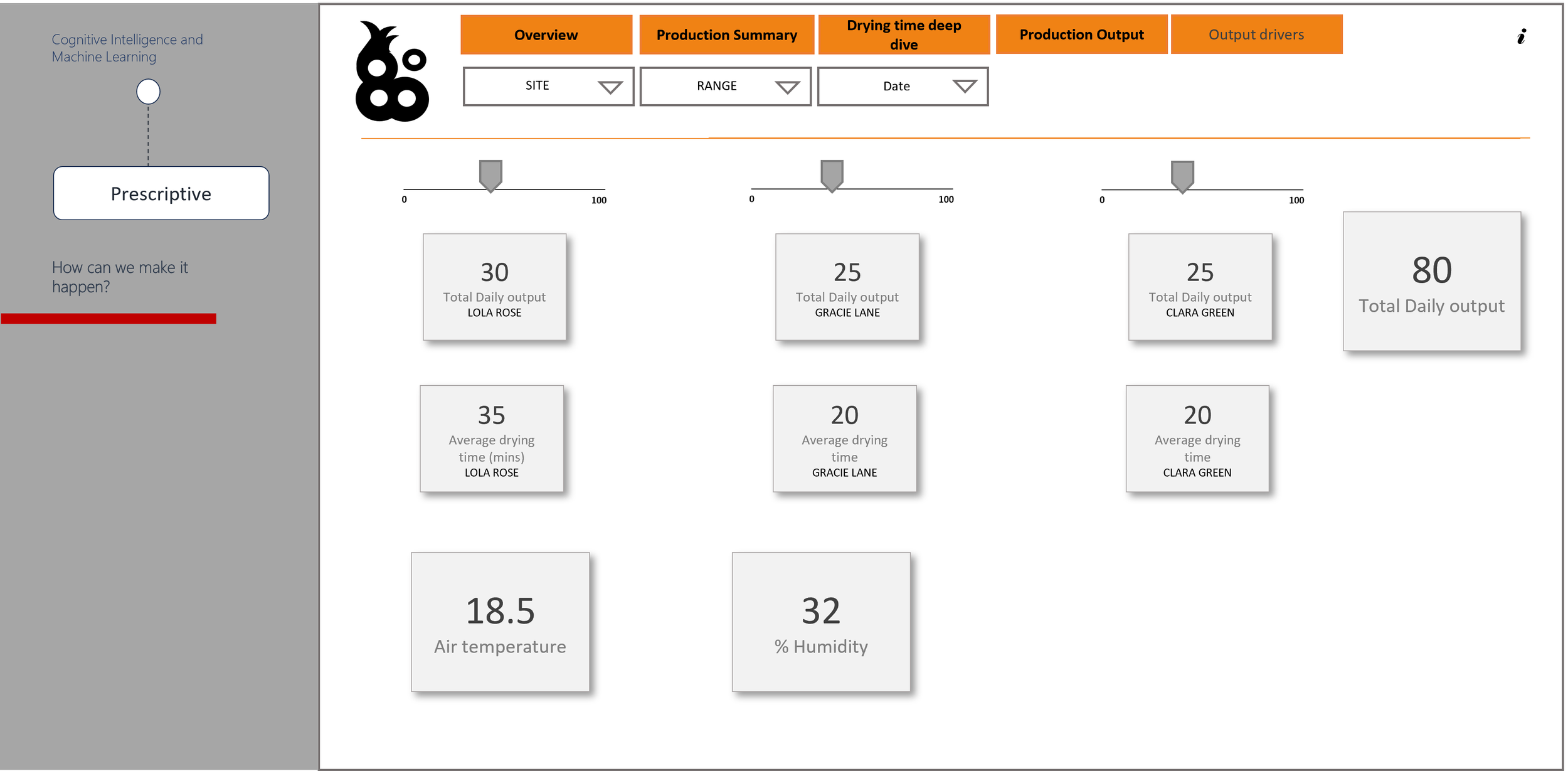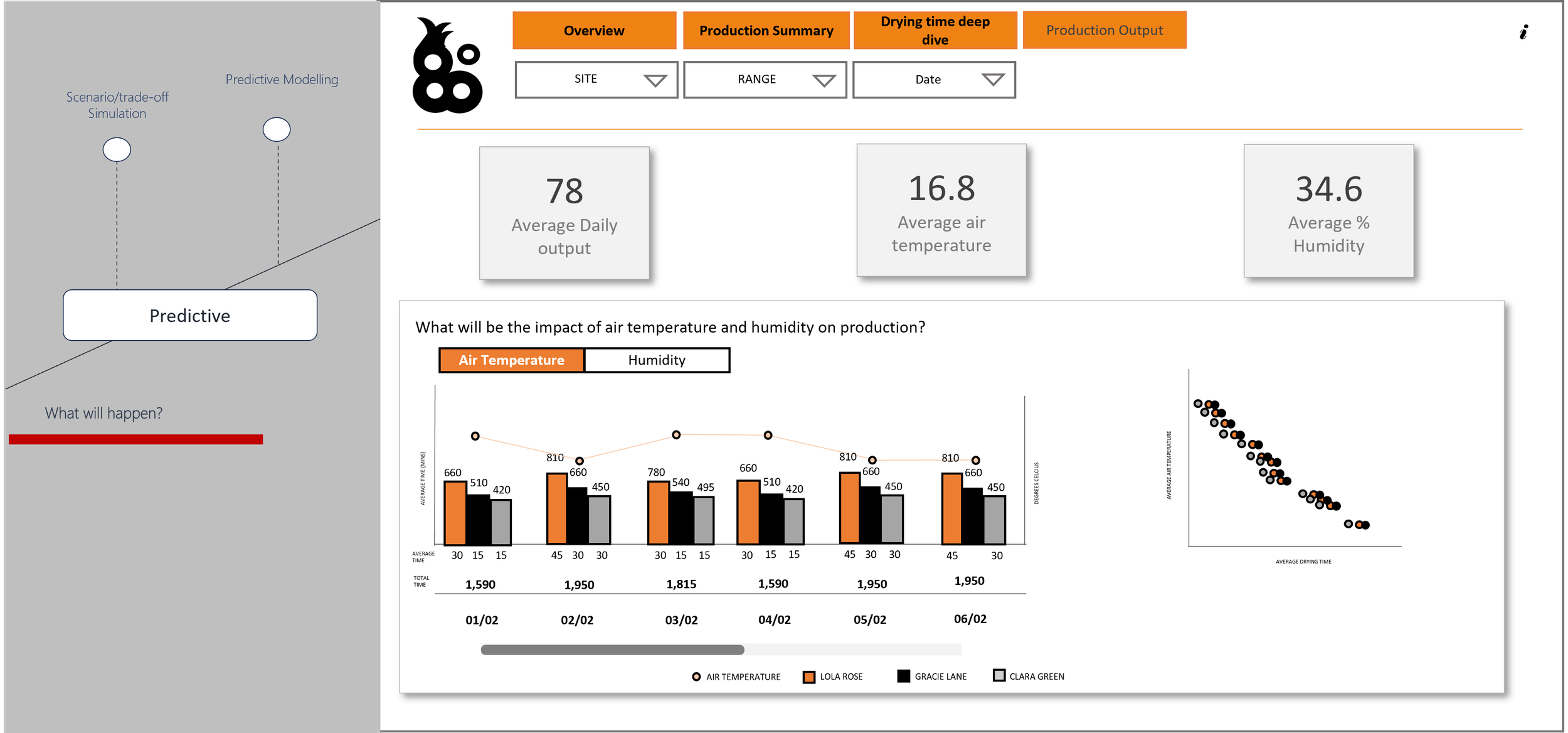Prescriptive Analytics – Outputs, levers and drivers
/Welcome to the final part of our five part series on the Analytics Maturity Model. If you missed the last parts of this series, you can find them here.
Over the last number of weeks we have been exploring the Analytics Maturity Model. This is a roadmap for organisations to get to know their data and ultimately become insight driven. The stages of the journey are shown below. This week we are going to look at the last stage of the journey, Prescriptive Analytics, what are the elements you need to tweak to generate a certain outcome?
We have been following a manufacturing company on their analytics journey. They noticed that output was low on certain days, and have been working to find out the reasons behind it, and what they can do about it. They have started their journey by defining their metrics, captured their data, visualised it, identified the current issues, why they have happened and even predicted what will happen in the future depending on the weather conditions. What do they do with that information? They take action, but what action do they take? Again, organisations may know the answer to this anecdotally, but a prescriptive model will take all the data available and provide outcomes based on scenarios. I have often heard this described as ‘Outputs, levers and drivers’. Drivers are the factors in this example. In this case, materials and weather conditions, the two things that remain unchanged in the sense that they cannot be controlled. The levers are the elements that can be controlled, such as temperature and humidity, named as such as they can be controlled. The outputs are just that, they are the result of pulling the levers on the drivers, which in this case are drying times and production output.
How does this work in practice? To get to this stage, a predictive model would need to be in place, it will predict outcomes and scenarios based on the data it has been fed, but the user will have the ability to tweak the scenario to find the best possible outcome, which will feed into the solution. Let’s look at this using our example; our company needs to know how to create the conditions to ensure that drying times are consistent across all materials, resulting in no change in production output, regardless of the weather conditions. Machine-learning algorithms will parse through data using ‘if’ and ‘else’ statements to explore scenarios and make recommendations. These recommendations are then verified by the production team, and strategies are put in place to ensure production is unaffected by the weather conditions. This is the perfect blend of technology and business knowledge. The example below shows what this might look like. A Production Supervisor can use the toggles to select the desired output and the model advises what the desired air temperature and humidity should be.
Technology is amazing, but technology alone wouldn’t be half as impactful without the business knowledge to see it through to practical application. At Endeavour, we leverage the blend of technology and business knowledge. Our deep understanding of Microsoft technologies alongside the business application has proved invaluable to our clients, transforming their businesses and saving them money. We have worked with a number of organisations at varying stages of analytics maturity, providing services from infrastructure to AI whilst growing our own diverse business knowledge. We understand the challenges organisations face on the path to becoming insight driven. Data definitions can be difficult to align on. Knowing what infrastructure, you need in place to capture data efficiently and consistently while keeping costs low can be difficult to navigate. Adoption of new systems within an organisation can be difficult. Our experts at Endeavour are Microsoft certified along with several years of experience with organisations helping them navigate their analytics journeys. If you’re not sure how to get started on your analytics journey, why not get in touch with the team at Endeavour? We offer a free, no obligation consultation to help us get to know your organisation and help your understanding of what is involved in becoming insight driven.












